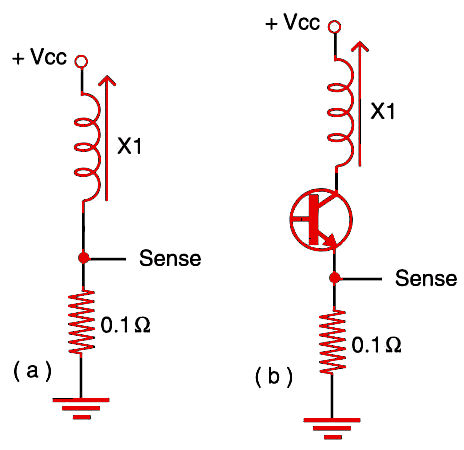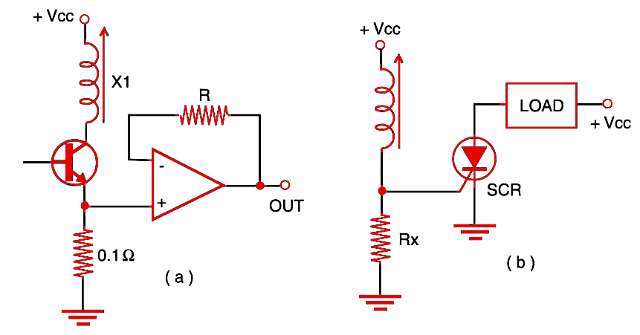This article is from my book Robotics, Mechatronics and Artificial Intelligence (sold out) published in the United States. The described circuits are configurations indicated to monitor the current flowing across a load.
The amount of current passing across a solenoid depends on the position of the core. When operating with dc or pulses, the current changes according to the force, and the changes can be used to drive some external circuit. The circuits shown by Figure 1 can be used for current sensing in many applications.
In Figure 1a, we have direct sense. The output is 0.1 V per ampere. In 1b, we have the same circuit when the solenoid is driven by a transistor (bipolar, Darlington, or power CMOS). The value of Rx can be increased according to the application, but remember that, as the value becomes higher, so does the voltage drop in the component and the amount of heat it generates.

The circuit shown by Figure 2a uses an operational amplifier to boost the voltage sensed by the circuit. In 2b, we show how to use an SCR to trigger some external load when the current in a solenoid rises above a predetermined value.




